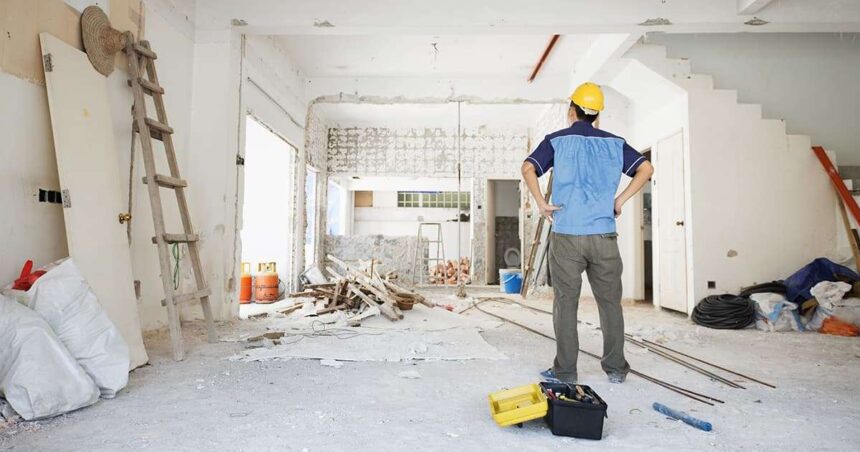Renovating your home can be an exciting and rewarding process, but it also brings a new level of complexity when it comes to home insurance. Many homeowners overlook how upgrades can significantly impact their insurance policy, from altering coverage needs to changing premium rates. Understanding how renovations affect your home insurance ensures you’re properly protected, avoiding costly surprises down the road.
In this comprehensive guide, we’ll explore how different types of home upgrades influence your insurance policy, what to consider before starting renovations, and tips for ensuring your home remains adequately covered during and after your project.
1. Why Renovations Impact Home Insurance
Home insurance policies are designed to protect your property from unforeseen events like fire, theft, and natural disasters. When you renovate your home, you may be increasing its value, changing its structure, or introducing new risks.
This can impact your insurance in several ways, including changes to coverage limits, premiums, and the need for additional endorsements.
- Advertisement -
a) Increased Home Value
One of the most obvious effects of a renovation is an increase in your home’s value. Upgrades like kitchen remodels, new additions, or high-end finishes can significantly boost your home’s market value. However, this also means your home’s replacement cost (the cost to rebuild it in the event of total loss) increases. Your insurance policy may need to be updated to reflect this new value to ensure adequate coverage.
b) New Risks Introduced by Renovations
Certain renovations, like installing a swimming pool or adding a wood-burning fireplace, can introduce new risks. Insurers may see these additions as higher liability risks, potentially increasing your premiums or requiring additional coverage.
c) Changes in Structural Safety
Structural changes, such as knocking down walls, adding rooms, or altering the foundation, can affect your home’s safety and stability. If these renovations aren’t completed up to code, it may impact your insurance policy’s terms or even lead to denial of claims in some cases.
2. Types of Renovations That Impact Home Insurance
Not all renovations will affect your home insurance policy equally. Some upgrades are more likely to change your coverage needs and premiums. Here are some common examples:
a) Kitchen and Bathroom Remodels
Renovating your kitchen or bathroom is one of the best ways to increase your home’s value, but it also tends to increase the cost to rebuild your home. High-end appliances, custom cabinetry, and luxury finishes can lead to a higher replacement cost. Be sure to notify your insurance provider about these upgrades to adjust your coverage accordingly.
b) Home Additions
Adding a new room, expanding your living space, or constructing a second story adds square footage to your home, which increases its value. Your insurance policy should be updated to reflect the increased square footage and the cost of the addition.
c) Roof Replacement
Replacing an old roof can have a positive impact on your home insurance. New roofs are typically more durable and resistant to weather damage, which may lower your premiums. However, the materials used can also affect your policy. For example, impact-resistant materials may lead to discounts, while more expensive materials like slate may increase your premiums.
d) Swimming Pools and Hot Tubs
Adding a swimming pool or hot tub creates an attractive new feature for your home, but it also introduces higher liability risks. Most insurance companies will require you to increase your liability coverage or add an umbrella policy to cover potential accidents.
e) Home Offices and Business Use
If you’ve converted a part of your home into a home office or a space to run a business, your standard home insurance may not provide sufficient coverage. Home-based businesses often require separate business insurance or additional endorsements to cover equipment, inventory, and liability.
f) Upgraded Electrical, Plumbing, and HVAC Systems
Upgrading old electrical wiring, plumbing, or HVAC systems can improve safety and reduce the likelihood of fires, water damage, and mechanical failures. Insurance providers may offer discounts for these upgrades because they lower the risk of covered losses.
g) Home Security Systems
Installing a home security system, including alarms, cameras, and smart locks, can reduce the risk of burglary and lower your home insurance premiums. Many insurers offer discounts for homeowners who take steps to secure their property.
3. Steps to Take Before Renovating Your Home
Before starting any renovation project, it’s important to understand how it may impact your home insurance policy. Here are some key steps to take:
a) Contact Your Insurance Provider
Reach out to your insurance company before beginning any major renovation project. Explain the nature of the renovations and ask how it may affect your coverage. This allows your insurer to make any necessary adjustments to your policy.
b) Check for Coverage During Renovations
Not all home insurance policies cover damages that occur during renovations. If your project involves major construction or if your home will be unoccupied for an extended period, you may need a builder’s risk policy or other temporary coverage.
c) Hire Licensed Contractors
Working with licensed and insured contractors ensures your renovation complies with local building codes and reduces the risk of substandard work. It also makes it easier to file insurance claims if something goes wrong during the project.
d) Document the Renovation Process
Take photos and keep records of all renovation activities, including receipts for materials, permits, and contractor agreements. This documentation can be invaluable if you need to file an insurance claim or prove the value of your upgrades.
4. How Renovations Affect Your Insurance Premiums
Renovations can lead to changes in your home insurance premiums, depending on the type and scope of the project. Here’s how different upgrades typically impact premiums:
a) Premium Increases
- Major Structural Changes: Expanding your home’s footprint, adding rooms, or making significant structural changes will likely lead to an increase in premiums due to the higher replacement cost.
- High-Risk Additions: Installing features like swimming pools, trampolines, or fireplaces may lead to higher liability coverage costs.
- Luxury Upgrades: High-value items such as marble countertops, hardwood floors, or high-end appliances can increase the replacement value of your home, leading to higher premiums.
b) Potential Premium Decreases
- Safety and Security Improvements: Installing a home security system, upgrading electrical wiring, or replacing an old roof may qualify you for discounts, as these upgrades reduce the likelihood of claims.
- Green Home Improvements: Many insurers offer discounts for eco-friendly upgrades, such as solar panels, energy-efficient windows, or water-saving fixtures, as they contribute to a safer, more sustainable home.
5. Ensuring Adequate Coverage After Renovations
After completing your renovation, it’s crucial to review your home insurance policy to ensure it adequately reflects your new home value and any new risks introduced by the upgrades.
a) Adjust Your Coverage Limits
Make sure your policy’s dwelling coverage limit accurately reflects the increased cost to rebuild your home. This may involve increasing your coverage limits to ensure you’re fully protected in case of a total loss.
b) Consider Additional Coverage Endorsements
Depending on your renovation, you may need additional coverage endorsements. For example:
- Scheduled Personal Property Endorsement: If you’ve added high-value items, like custom art or jewelry, you may need additional coverage to protect these items.
- Liability Coverage: Increasing your liability coverage is important if you’ve added features like a pool or if your home is used for business purposes.
c) Review Deductibles
Consider reviewing your policy’s deductible to ensure it aligns with your current financial situation and risk tolerance. A higher deductible can lower premiums, but it also means more out-of-pocket expenses in the event of a claim.
6. Common Mistakes to Avoid When Renovating and Updating Your Policy
When it comes to renovations and home insurance, there are several common mistakes that homeowners should avoid:
a) Failing to Notify Your Insurer
Failing to inform your insurer about major renovations can lead to gaps in coverage or denied claims. Always keep your insurance provider informed about significant changes to your home.
b) Underinsuring Your Home
If you don’t update your coverage to reflect your home’s increased value, you may be underinsured. In the event of a major loss, this could result in significant out-of-pocket expenses.
c) Neglecting Liability Coverage
Adding features like swimming pools, hot tubs, or trampolines increases your liability risk. Ensure you have enough liability coverage to protect your assets in case of accidents or injuries.
d) Not Documenting Upgrades
Keep detailed records of all renovations, including photos, receipts, and permits. This documentation can be crucial for insurance claims and determining the value of your upgrades.
7. Protecting Your Investment with the Right Coverage
Renovating your home is an investment in its value, comfort, and functionality. However, it also comes with new insurance considerations that should not be overlooked. By understanding how different upgrades impact your home insurance policy and working closely with your insurance provider, you can ensure your home remains adequately protected throughout and after the renovation process.
Whether you’re adding a new room, upgrading your kitchen, or installing a pool, taking the time to review and update your insurance coverage ensures you’re fully protected against unforeseen risks. In doing so, you’ll be able to enjoy the benefits of your renovated home with peace of mind.

